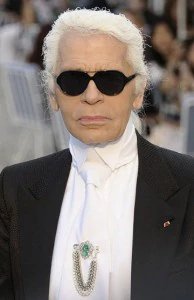Art is interpretation. Art is subjective. Art is perception. Art is individualism. Each one of us translates art based on our own experiences, sensibilities, feelings and emotions.
Some may argue that even though interpretation may be individual, certain universal basics, a foundation, an order needs to be there for the inception of art. Beyond that the artist can take creative license to express his or her views.
Non-conformist that I am, I am willing to go as far as to even dispense with the above theory of foundational art. After all, if there are universal parameters, dictums and precedence then where is the originality, the expression and the true tour de force art.
My most cherished designer Karl Lagerfeld for Chanel directed the latest film, The Tale of a Fairy for the 2011-12 cruise collection. As is the signature of the master couturier the movie is dripping, oozing and drenched in luxury almost bordering on hedonism. Whether it is the colonial Parisian mansion with the silent-footed bevy of maids and butlers or the “actors” walking in the house with a cascade of Chanel pearls around their long necks wearing signature white and black Chanel pumps making their 6 feet lanky frames reach towering and withering heights. Whether it is the impromptu trip to Monte Carlo or an almost on-the-verge of an orgy on the French Riviera. It is all there.
There are beautiful girls kissing each other, a waif who looks like an angel and an element of surrealism. In fact, all the elements of a good Hollywood blockbuster are blended into the film.
So then what is so wrong, so very wrong with the film? Well, the simple answer is the lack of a story, a script and a backbone to the film. The story centers around three women, one who is hysterical through the whole movie, the other solely there to provide the international element with her well-modulated British accent and the third for the hot and steamy girl kiss. The story borders on being cheesy and entering into the realm of being ridiculous.
What redeems the movie is the physicality of the cast. Two of the lead actors are in their mid and late 40s. The girls are androgynous without the essential prerequisite Hollywood bust and lip enhancement. It is antithesis to Hollywood casting. It defies all traditional norms of established standards of beauty.
The silver-haired, 40-some year old Kristen McMenaney with her pierced nose and bouffant hair gives any 20 year-old run for her money.
Freja Beha in her underwear is reminiscent of Kate Moss in her very young and best days for the Calvin Klein ads.
In summary, even when Karl Lagerfeld does something less than his trademark perfection, a little oops, a faux pas-somehow it is interpreted as art. In this film, the physical attributes of the cast of “actors” redeems Lagerfeld’s movie from entering the Girls gone Wild genre.


